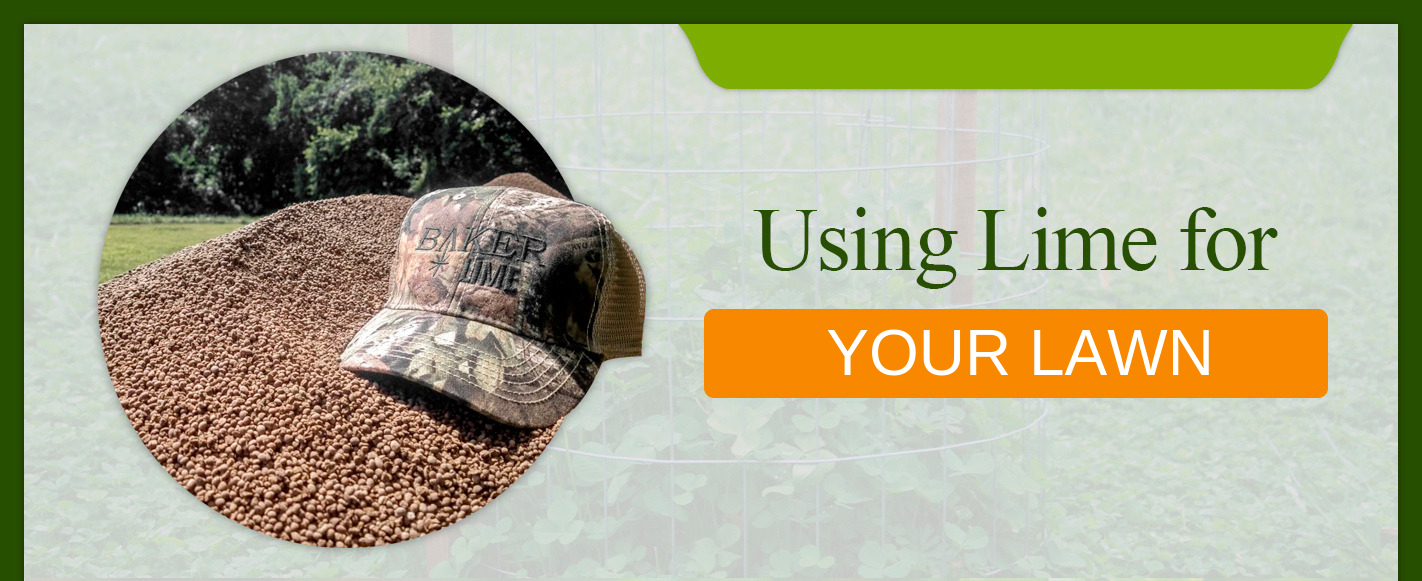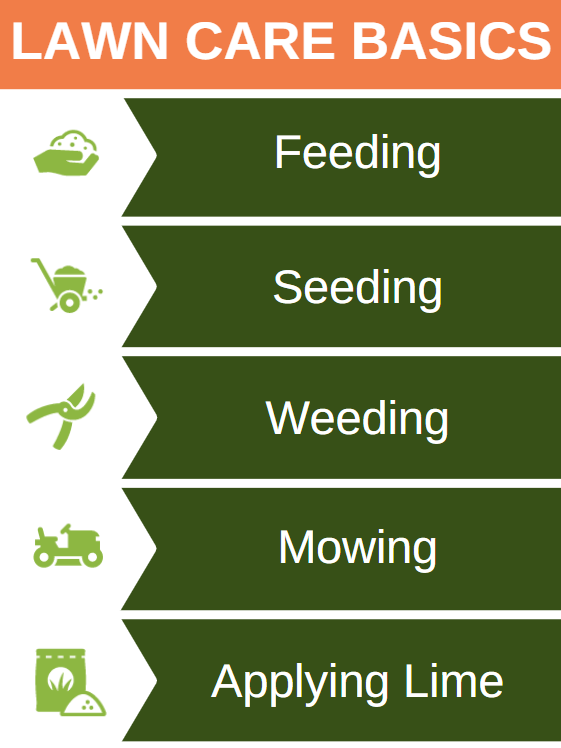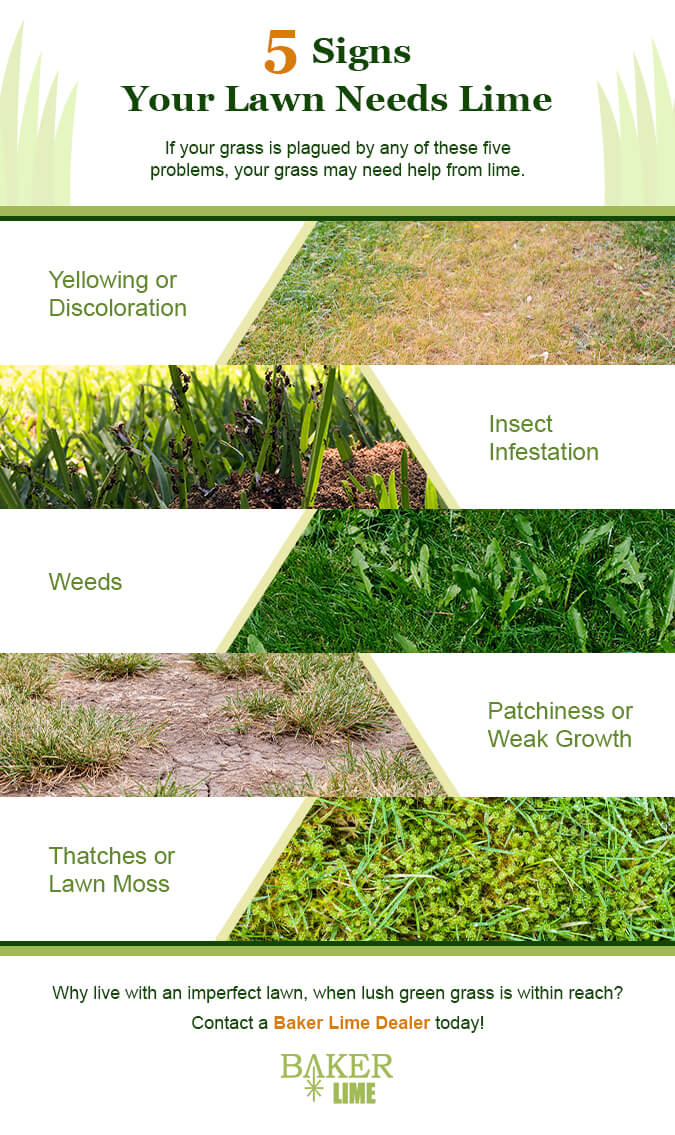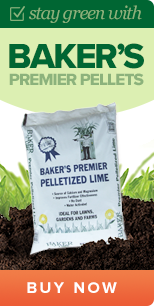Lime Application Tips for Lawns: Adding Limestone to Your Grass
Table of Contents

Author/Reviewed By: Josh Miller, Sales Manager: Baker Lime & North America Minerals
Published: 2/23/2017 – Updated: 10/24/2023
Lime For Lawns
We weed, feed and seed our lawns, sometimes with disappointing results that leave us frustrated with yellow spots and insufficient growth. What we envision is a lush green grass under our feet throughout the growing season. Nothing beats the look or feel of a well-kept lawn, plus it provides the perfect backdrop for social events and quality family time.
Nobody wants to play games on a rough, patchy and discolored lawn, so the endless quest for the perfect green lawn continues for any person who has grass to take care of. Cultivating and maintaining a great yard goes deeper than mowing and occasionally pulling or spraying a few weeds. Lime treatment to your grass can make the difference.
The quest for a healthy green lawn is important for many homeowners. We see inviting green blades everywhere and feel envious of it, yet barely have time at home to scatter seeds and hope for the best. Those perfect lawns you admire, and maybe envy, probably undergo a rigorous care schedule that includes regular intervals of the following steps for the best lawn care:

The lawn caretaker might dare to fertilize or treat for weeds but usually leave the rest to nature, which may or may not need some help. If you live in the northeastern US like us at Baker Lime, you may already know that acidic soils can be a challenge for grass growth in our part of the nation.
The knowledge of dolomitic limestone on lawns grows as neighbors swap advice or generations pass down practices, but it remains a generally misunderstood and underrepresented practice. Not many people realize that liming your lawn can resolve many yard issues, not just for grass but also in your landscaping, garden and flower beds. This is why we’re motivated to share facts about lime for lawns and empower people to tame their turf and achieve the yard of their dreams through proper lime application techniques.
What Does Lime Do for Grass?
Lawn lime application corrects the pH balance in soil by neutralizing its acidity and alkalinity. You can almost think of it as an antacid for your grass because you’re giving it something it needs. Fertilization of lawns causes the PH of the lawn to become acidic by applying limestone you can bring the PH level back down to a natural balance which allows grass to prosper. However, PH balance is not the only benefit that lime has on lawns.
Video – Benefits of Adding Lime to Your Lawn
Is it good to put lime on your lawn? Learn the benefits of lime application.
Lime for the lawn provides grass with many benefits:
- Balances the pH level, also commonly called the acidity or alkalinity
- Lime for lawns inserts calcium and magnesium that grass needs to grow and be resilient through times of stress like extreme temperatures, drought or excessive snow or rainfall
- Helps with new seed, new sod or existing yards
- Liming your lawn puts nutrients in the soil that sometimes are not there for better soil health
- Benefits other micro-organisms in the dirt that are needed for a natural balance
- Encourages thatches to decompose
- Maintains or restores soil affected by environmental factors
- Boosts the effectiveness of fertilizer and herbicide
- Makes application fast, simple and easy
- Grows strong roots for lasting beauty and endurance
Should I Put Lime on My Lawn?
You never know what Mother Nature will do, especially when the terrain can vary by the mile with woods, mountains, flatlands, rivers and quirky regional weather patterns. Factors affecting the pH balance of your soil include:
- Pollution
- Acid rain
- Fertilizers
- Surrounding land usage
- Pesticides
- Fallen pine needles
- Rain totals
- Amount of decaying matter in the dirt
- What kind of soil it is
How many nutrients leach from the soil – and how often they leach – is a difficult thing to gauge without the help of a test because the conditions are truly different for everyone.

What You Need to Know About Lime Before Applying to Your Lawn
Dolomite lime for lawns is ground limestone, a rock formed chiefly by the accumulation of organic remains such as shells or coral, and it consists mainly of calcium carbonate and magnesium carbonate. If you’ve looked into lime at all, you’ve probably seen many different types, some of which are caustic and hazardous to handle:
- Agricultural
- Burnt (hazard)
- Calcitic
- Dolomitic
- Hydrated (hazard)
- Slaked (water added for mortars, plasters or cement)
Nearly all of the lime sold for lawn lime application is ground, dolomite lime for lawns. Dolomite is a mineral found in limestone that is rich in calcium-magnesium carbonate, making dolomitic lime-rich in calcium and magnesium. Calcitic limestone is also rich in calcium carbonate but has much less magnesium, so it’s not as nutrient-rich as dolomitic lime.
The basic mission is to have the carbonates in the lime bind with the particles in the soil. Turfgrass uses many different minerals, and when the pH level of soil drops below about a 6, it inhibits the availability of other necessary plant nutrients.
Besides the calcium and magnesium, those nutrients include:
- Nitrogen
- Phosphorus
- Potassium
- Sulfur
- Molybdenum
Quality lime for lawns varies from place to place, so to gauge it you can ask about its effective neutralizing value. The lower that value, the more of the lime you’ll need to apply, so seek a lawn lime with a neutralizing value greater than 80 percent, such as Baker Lime that starts at 89 percent.

Dolomitic lime for lawns is usually sold in the form of powder or pellets. The powder lime is exactly that, a powder of fine consistency that works into the soil. The pellets are placed on the ground then dissolve and breakdown into the soil when the yard is watered or there is a decent rainfall. Many people swear by limestone pellets because the powder can be difficult to manage, hard to spread, can blow away easily or leave a cloud of messy dust.
What is The Limestone For Lawn Treatment?
Lime application for lawn care can actually help reverse the effects of damaging elements found in grass, including aluminum, iron and manganese. The calcium specifically has a sort of regulating effect on other soil nutrients such as copper, phosphorous and zinc, all of which can have damaging effects and inhibit growth.
There are a number of industries, entities and people that use a lime lawn application:
- Agriculture
- Recreation or athletic fields
- Golf courses
- Residential
- Landscape
- Commercial and retail business
- Government
- Lawn maintenance
- Contractors
- Equestrian
- Fruit growers
- Turf farmers
How Can I Tell if My Lawn Needs Lime?
Weeds, patchiness, discoloration or poor growth can all be signals you might need lime for the lawn, but it’s best to have your soil tested. A soil test is a simple process, and once you do it you’ll know the exact acidity level and can plan the best care regimen.
There are several homemade ways of testing soil, but the most reliable and accurate method is through your county extension or land-services office. If the university system in your state has an agricultural lab, you can often get the tests from there, as well as garden centers. In some cases they are free, but the cost can be as little as $10.
You can also do the test online and through the mail by sending in a sample to determine if you need lime for your lawn. Soil testing services will usually send you the results directly. An authentic soil test will give you better confidence in your results, as well as give you more power to cultivate the perfect, lush, green lawn you envision.
Lawn grasses in states that have cold winters generally do well with a soil PH level of about 6.5 to 6.8. The pH levels measure acidity/alkalinity on a scale of 0-14, with the low pH numbers representing items with a high acid content, such as vinegar or lemon juice.
A good soil test also tells you levels of calcium and magnesium. This information will better guide you to either the most popular dolomitic lime that contains magnesium, or the more calcium-rich calcitic lime.
Some people say that you cannot apply too much lime to the lawn, but others argue that it can indeed happen – and that it’s hard to correct if it does. Too much lime is definitely possible, which is why an accurate, inexpensive soil test provides an excellent guide. The results will tell you how much lime to apply and your best insurance against unintentional damage.
When to Add Lime to Your Lawn, and How Much Lime Do I Apply To My Lawn?
Applying lime to your lawn fits with everything else you do outdoors to prepare for summer or winter. Many insist fall is the best time to lime lawns because it gives the lime the longest time to work into the soil before the growing season so you can have the best soil conditions.
Experts agree that you can spread lime on your lawn anytime, but it is ideal during the Spring and Fall seasons and during the morning or evening hours. You may also wonder if you can put down lime and fertilizer together. Professionals advise against using lime at the same time as fertilizer, but they also say when you apply lime and grass seed to cover patchy spots, it’s OK to apply a gentler starter fertilizer. So be careful if you are looking to apply lime and fertilizer at the same time. The planting authorities say the ideal temperature for planting grass seed is 65 to 70 degrees F.

Quantities of lime for lawns are normally expressed in a number of pounds per 1,000 square feet (one acre is 43,560 square feet). For example, a hypothetical-yet-typical application might be 40 pounds of pelletized limestone per 1,000 square feet of grass area you want to treat.
The pH number revealed by your soil test serves as an excellent guide for gauging how much lime your lawn needs. You can also contact your local Baker Lime expert to help interpret the soil-test numbers and order the correct amount of lime for your yard size.
The lime normally comes in 40- or 50-pound bags. Opinions on how often to apply it range from every few months or annually to once every three or five years. So much of when to lime your lawn depends on your individual situation. The best tool you have is knowledge about what’s in your soil and what happens to it throughout the seasons. For example, lime will drain through a sandy soiled lawn and require a more frequent application than a yard with stickier, clay-based soil.
Each type of soil presents a different kind of challenge because lime runs through sandy ground too quickly, especially with heavy rain, and doesn’t mix quickly enough into clay-based soil. You can consider improving the texture of soil by introducing organic matter such as aged manure, finished compost or chopped pine bark. These things can aid the lime in doing its job and work it into the soil faster.
How to Apply Lime to a Lawn
How to spread or apply lime to your lawn depends on the size and texture of the lime you choose. Most seem to agree that the powdered form of lime is harder to handle but can be applied with something as simple as a coffee can. Or you can use a pelletized lime for your lawn instead. You shouldn’t use liquid lime for lawns as it won’t give your soil a sufficient amount of lime for effective conditioning.
What’s the best way to spread lime on your lawn? There are several equipment options, including a rotary spreader, drop spreader and a broadcast spreader. A rotary spreader probably gives the best and most consistent application without much clogging or clumping. Some people say a drop spreader is less than ideal, but plenty of others make them work. How you apply the lime depends largely on what form of lime you buy and how much grass you have to cover.
People commonly use all types of spreaders, home-rigged tools, buckets, cans or sifters to get the lime onto the lawn. You may own a tool or be able to rig a tool that will do the job, but you can also check into renting the right equipment to apply lime or hire a contractor to do it. If you have questions about how to lime a yard and the lime application process, contact the Baker Lime team!
The method of dolomitic lime for lawn application can be as diverse as the land owner’s imagination. Any way you go about it, avoid spreading lime on a windy day and try to use a crisscross pattern as you work it across the yard for the best lime application.
Some plants in your landscape thrive in an acidic soil of 5.5 pH or less, so take care to avoid those areas when liming your lawn or other plants in your garden:
- Azaleas
- Beech trees
- Begonias
- Blueberries
- Caladium
- Dogwood trees
- Gardenias
- Ferns
- Holly bushes
- Pin oak tree
- Willow oak tree
You can seed and apply lime at the same time, but many people recommend applying the lime first to give it time to work.
Speaking of time, it’s natural to want to see improvement right away. Remember, however, that lime is not an immediate-gratification application. It’s more like an investment in the long-term health and beauty of your lawn, but it does pay dividends well into the future.
There is no “fast-acting” lime for grass and it will take at least several months for lime to mix well into your soil and create the beneficial balance of plant nutrients. It may take a growing season or two, or even three, to see significant improvement. Rest assured that you can achieve continued hardiness with consistent lime treatment for your lawn.
Where Can I Buy Lime for My Lawn?
If you are wondering where to buy lime to maintain your lawn, we at Baker Lime are limestone suppliers who have been producing quality lime products since 1889 for a wide range of clients. Baker mines the lime in York County, Pennsylvania and provides service throughout most of the northeastern United States including Delaware, Maryland, New Jersey, New York, Pennsylvania, Virginia and West Virginia.
By way of a unique system, it’s possible to ship and pick up lime from Baker practically anytime of the night or day, 365 days per year. Our lime lawn care products include:

You can imagine how 126 years have enabled us to become lime experts and emerge as an acknowledged industry leader when it comes to our knowledge of lime for gardens and lawns.. We have a proven record of helping people reap high-yield fields, grow ideal yards, cultivate fertile gardens, install lush golf courses and create other beautiful spaces.
Along with technical skill and complete industry knowledge, the people of Baker Lime commit to becoming a partner to our clients and not just an institution that sells or supplies product. You’ll encounter friendly people who know how to listen and have the expertise needed to respond to your needs quickly and efficiently. Let us help you cultivate an ideal lawn! Find and contact your local Baker Lime dealer today.
Related Resources








